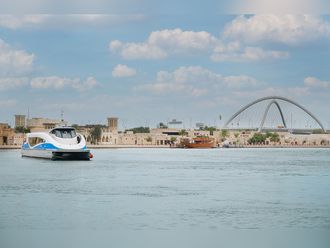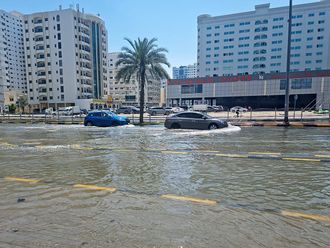Naseem Gaith, a 27-year-old businessman from Lebanon, said he was not aware of the changes in road names and signs.
“This is news to me, and I think it is a horrible idea, especially for the people who have been living here for a while. It takes people out of their comfort zone and is also going to cause confusion,” he said.
“In the long term, I can see the benefits perhaps. Many years from now, people will refer to the street and then ask who was so and so after whom the street was named. But in the short term, I think it will cause a lot of problems. It will take a long time for people to get used to the new names,” Gaith added.
He also said that he was glad he had a car.
“Thank God I can drive myself places, because say I had to take a taxi, I’d have to start studying the new routes and names,” he said.
Saeed Al Reyami said: “I wasn’t aware of a new address system being made, but it is a good thing I think. Moreover, from what I understand, they are using a system similar to the American one, so it should make things simpler,” said Saeed Al Reyami, 25, an Emirati finance executive.
“I haven’t bothered remembering street names before, but since there is an official system now, it makes it easier to know and remember the name of where you are going. Previously there was no official address style; people just made up street names, so it was complicated,” he added.
Al Reyami was also pleased to hear about the Onwani system incorporating Emirati heritage into street and destination names.
“I think it is commendable to name streets after leaders and rulers, as it will allow people to know about and remember important figures and rulers who have made the UAE what it is,” he said.
Rajesh Varma, a human resources director from India, has noticed the new street names, and said he misses the numbered streets.
“Usually, street numbers help people figure out where they are and where to go. For example, if you are on 13th street, you know that the next parallel road is either 15 or 11, and you could head in the appropriate direction. But this kind of clarity is lost with just street names, making finding the way more complicated,” the 48-year-old said.
Varma, who has lived in the capital for three years, also said that it is difficult to remember the new names.
“I can see why naming streets after illustrious people is a good way of introducing residents to Emirati history. But then again, people need to take that interest as well. That said, people are always resistant to any kind of change, and perhaps the benefits of the new Onwani street names will only be felt after a while,” he added.
Sanet Meyer said: “The newly named street names mean that I now have to leave my home earlier in order to ensure that I get somewhere on time. I get lost often, and it is very difficult to direct bus and taxi drivers to a specific location,” Sanet Meyer, 42, a senior flight paramedic from South Africa, told Gulf News.
Meyer said she typically pays attention to street signs, and had noticed the recent changes, even though she had moved to the capital just three months ago.
“However, I find that most people do not use the new names, some of which are too long to remember. Instead, most people direct others using nearby landmarks,” she said.
Meyer conceded, however, that residents who come in and only learn the new names may not find the system confusing.
“But this confusion will remain for people who have known the older names,” she added.
Rania Akkela, a 27-year-old marketing and communication executive, feels that people still use the older names for the capital’s streets.
“Abu Dhabi is an intricate city with a lot of intersections, and the newer unknown names have made it harder to get to places. Taxi drivers are unfamiliar with them, and each resident has to learn both the old and the new names in order to direct others,” she said.
Akkela said she personally doesn’t look at street signs very much, and just uses landmarks to get around.
“Especially outside the main business centre, it is difficult to memorise the order of road names,” she explained.
She added that taxi drivers should be briefed about the new names, and way-finding services like Google Maps be updated, if authorities wish the Onwani street names to gain currency.
Alexandra Nunes, Portuguese resident, said: “Usually when I am driving, I follow the road signs and the street names. They are clear and helpful on the main roads but when you get into communities, they are not very clear and it’s difficult to navigate. Mostly, the numbers don’t follow a logical order. For example, in some areas like The Greens, the street numbers are in order but in some other areas, they are mostly not. I hope street names will make it easier for people to navigate, while proper house numbers and sector numbers will facilitate door-to-door mail distribution.”
Abdul Basit, Indian businessman, said: “I’m mostly on the road due to the nature of my work, but I can’t understand many of these new road signs. Somebody has to explain to people what is North and South on a particular road.”
Waqqas Asif, Pakistani finance manager, said: “I usually follow the numbers on the streets, for me it’s easy to remember. I also keep track of the landmarks to navigate, but if RTA is replacing numbers with street names I suggest they keep the names short, rather than long ones which are difficult to remember.”
Shripathy Shenoy, Indian executive, said: “I don’t follow the signs so much as I’m familiar with my routes. I mostly have a fixed routine daily, but even if I have to break away from my fixed routes, I don’t have problems finding my destination anywhere in Dubai. It doesn’t make any difference to me whether the road signs or street names are changed [or not].”












